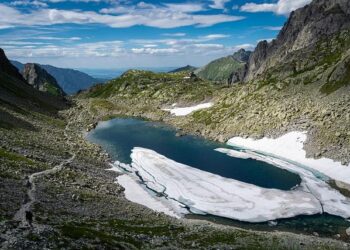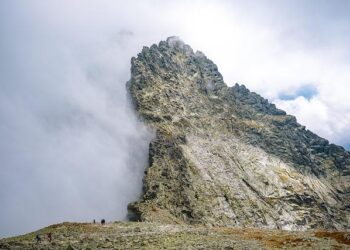Brussels is turning the spotlight on Slovakia’s struggling bear population, raising urgent questions about wildlife protection and conservation in the heart of Europe. As clashes between humans and bears escalate, the European Commission has initiated measures aimed at safeguarding these iconic animals, spotlighting the broader challenges of balancing biodiversity preservation with local interests. This article examines whether EU intervention can effectively rescue Slovakia’s bears from decline and what it means for conservation efforts across the continent.
Brussels Steps Up as Slovakia Faces Mounting Pressure to Protect Bears
With bear populations in Slovakia under unprecedented strain, the European Commission has intensified its involvement, urging the government in Bratislava to enforce stricter conservation measures. Recent reports highlight that Slovakia’s lax enforcement of existing wildlife protection laws has led to increased human-wildlife conflicts and a surge in illegal culling, threatening the delicate balance of its ecosystems. Brussels’ move signals a shift from diplomacy to potential legal action, emphasizing that sustainable coexistence between humans and bears is not only a national responsibility but a European obligation.
The Commission’s recommendations focus on several critical areas to safeguard the future of Slovakia’s bears:
- Enhanced monitoring systems to track bear populations and reduce poaching.
- Community engagement programs aimed at educating locals about coexistence.
- Stricter penalties for illegal hunting and habitat destruction.
- Investment in non-lethal deterrent technologies to minimize conflicts with farmers.
Failure to adopt these measures might trigger infringement procedures, setting a precedent for wildlife protection enforcement across the EU.
Balancing Conservation and Local Interests Key to Saving Slovakia’s Bear Population
Slovakia is at a crossroads in its efforts to protect one of Europe’s most iconic wildlife species. The brown bear population, vital to the country’s rich biodiversity and natural heritage, faces threats not only from habitat fragmentation but also from increasing conflicts with local communities. Farmers and residents living near bear habitats often bear the brunt of crop destruction and livestock losses, fueling tensions that complicate conservation efforts. To build lasting solutions, conservationists and policymakers are emphasizing the need for collaborative approaches that integrate the voices and needs of those affected directly by bear activity.
Key measures under consideration include:
- Compensation schemes to reimburse farmers for damages caused by bears, ensuring economic stability for local families.
- Community engagement programs that educate and empower residents to coexist with wildlife safely.
- Habitat corridors to connect fragmented forests, facilitating natural bear migration and reducing human-wildlife encounters.
| Stakeholder | Primary Concern | Proposed Solution |
|---|---|---|
| Farmers | Livestock losses | Compensation fund |
| Conservationists | Bear habitat loss | Protected corridors |
| Local communities | Safety risks | Education programs |
Recommendations Urge Stronger EU Enforcement and Community Engagement Efforts
Conservation experts and EU officials alike are calling for a more robust enforcement of wildlife protection laws across Slovakia to halt the alarming decline in bear populations. Current strategies appear insufficient against persistent illegal hunting and habitat fragmentation, which continue to threaten these iconic species. Authorities must enhance patrols, increase funding for monitoring programs, and impose stricter penalties on offenders to ensure compliance with environmental regulations. The European Commission has emphasized that without decisive action, the long-term survival of Slovakia’s bears remains at serious risk.
Beyond enforcement, fostering stronger community involvement has become a cornerstone recommendation. Engaging local residents as active stakeholders through educational initiatives and participatory conservation projects could create a collaborative environment where humans and wildlife coexist more harmoniously. Supporters argue that empowering communities to report illegal activities and participate in habitat restoration efforts will cultivate a sense of ownership and responsibility. Below is a snapshot of key actions proposed to bridge enforcement and community engagement:
- Enhanced surveillance: Deployment of drone technology and remote cameras
- Community watchdog networks: Training locals to monitor and report threats
- Public awareness campaigns: Targeted outreach in schools and rural areas
- Compensation schemes: Financial support for farmers affected by bear presence
| Measure | Expected Impact | Timeframe |
|---|---|---|
| Stricter Penalties | Reduced Poaching | Short Term |
| Community Monitoring | Improved Reporting | Medium Term |
| Educational Programs | Increased Public Support | Long Term |
In Retrospect
As Brussels deliberates on measures to protect Slovakia’s bears, the outcome could set a precedent for wildlife conservation across Europe. Balancing ecological preservation with local communities’ interests remains a complex challenge. The coming months will reveal whether EU intervention can successfully safeguard Slovakia’s iconic bears while addressing the concerns of those who share the landscape with them.
















